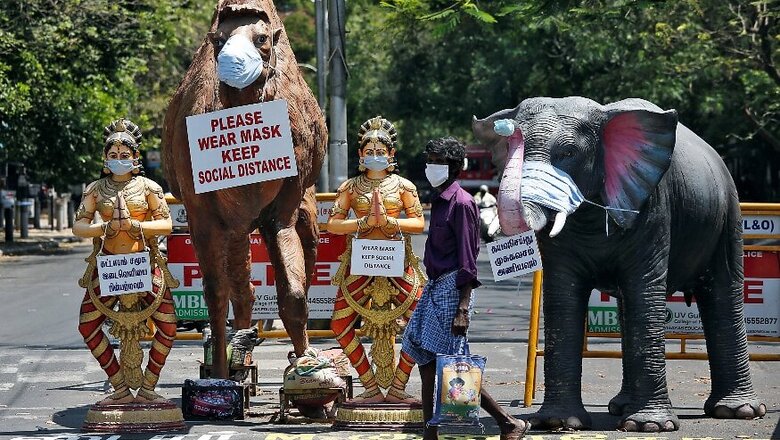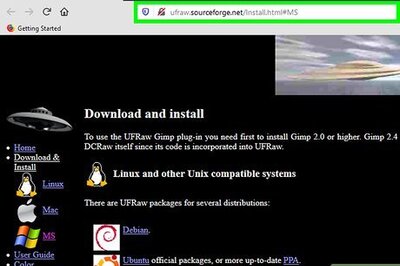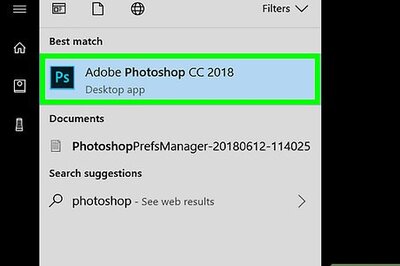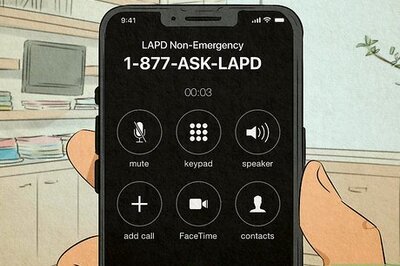
views
Like everyone else, a sense of uncertainty gripped me as I saw visuals of the impact of COVID-19 across the globe.
When it arrived in India, the situation turned chaotic pretty soon. The greatest lockdown in the history of independent India led to panic in the initial days.
I suddenly realised that I was in the thick of things. I also realised that it was time for me to step up and show the way -- bring people out of the panic mode and take them along to reach our goals.
The moment a collector puts a foot forward, however desperate the situation is, our system is such that our staff and official machinery too start taking steps ahead.
Thus, began our journey of handling the coronavirus crisis in Tiruppur. During this phase, we had our fair share of ups and downs, faced innumerable tough situations and more importantly, took home a lot of hard-won experience.
I would like to share 5 such important takeaways from the current scenario.
Creating a Strong Base
The first and foremost rule for any contingent scenario is getting a strong base. We got our control rooms going -- the COVID-19 control room for people to self-report, get clarifications and follow-ups.
We also had exclusive control rooms for pregnant women and guest workers. We then started working on institutional quarantine facilities and made arrangements for about 3,650 additional beds across the district. Also, we did not have a laboratory then. So we started working on getting our own coronavirus testing facilities as early possible.
Tiruppur being an industrial hub meant that we could reroute resources at hand to manufacture things that were the need of the hour. Masks and PPEs were manufactured in lakhs straightaway and we even started helping out other districts.
We had also put across our available personnel into various segments and teams to deal with the situation. Our personnel and machinery were ready and we were ready for the ultimate challenge.
Testing Times
Initially we had to screen, quarantine and test all international and interstate travellers. We also had to deal with the natural mass apprehension and anxiety and get maximum people to report. For each traveller, we had to track their travel history, get information from airport authorities, police records, etc.; consolidate everything and ensure that they were following strict home quarantine measures.
Soon the positive cases started appearing and that meant we had to trace the contacts effectively - high risk, low risk/primary, and secondary contacts.
A lot of resources and energy had to go into this as this was the most crucial step in curbing the spread of the disease. The numbers were rising quickly, there was very little time and we had to step up further with whatever resources we had on hand.
Containment Matters
As contacts were being traced, epidemiological mapping was done based on the primary/index cases and accordingly, containment zones were created. This meant the disease spread was now “contained” within these areas.
We ensured that every individual in the containment zones underwent active and passive surveillance, local bodies ensured massive disinfection and police created a virtual fortress along the boundaries.
Incident commanders were appointed for each of the containment zones. Volunteers were deputed to deliver essentials to people in these areas.
Once these activities were done effectively, we knew ‘containment’ was underway and this reflected in the number of new cases and the fact that there were no cases appearing outside the containment zones.
Hotspot On
There are a total of 41 border points in the district and we had to ensure an efficient perimeter control in those places. Apart from police teams, health and revenue department teams were also put on duty for screening and following up of outstation travellers.
Besides, we tested and screened high-risk people working in hotspot areas in the district, like police personnel, frontline health workers, volunteers and people working in markets.
By now, looking at other places and learning from their experiences, we knew how to identify the hotspots and what to focus on.
Taking People Along
The crisis situation was such that people were an integral part of it and it was imperative to take them along in every step of our battle -- from doorstep delivery of essentials to coming up with social media challenges like the ‘Give up Challenge’ and ‘Umbrella Distancing Challenge’ as part of working on social distancing.
We were very determined from the beginning that we had to take our people along with us as much as possible. Massive awareness campaigns were launched -- both online and offline.
We also got together a huge volunteer force called the ‘Tiruppur Corona Fighters’ who went onto fill crucial gaps in our connection with the public.
These are just some of the lessons that I have learnt over the past few days and all these have given me a wealth of experience which no book could ever teach.
The biggest lesson of all, at this stage, would be that it is far from over and we need to keep up our efforts and work as per plans and protocols.
There are other huge challenges as well with respect to resuming economic activities, restarting industries and taking proper care of and addressing the issues of our guest workers from other states.
Our next sets of plans and strategies have started taking shape and I am sure our teams will go all-out to achieve them. Nobody can chart a definitive way out of this crisis at this point, but I do believe that if we can continue keeping our systems in place and keep relentlessly doing what we are doing, we can put this crisis behind us soon.
On a personal note, I would like look with gratitude at the current scenario where we now have a 100 per cent recovery rate. The job has been done so far against all odds and we need to keep doing it -- All of us.
(As told to Poornima Murali)




















Comments
0 comment